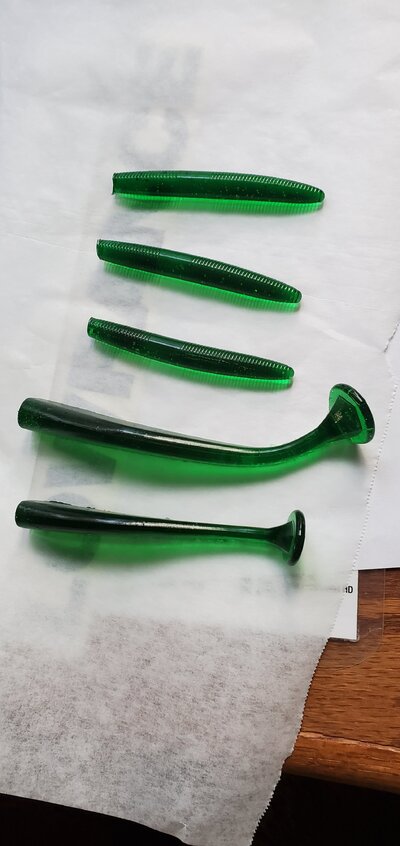S
slabjig
0
I've wondered about Gulp lures for some time...they're clearly not PVC, and they claim to be biodegradable. So I did some research on YouTube and came up with this method. I'm very impressed with the final product, they feel like plastisol lures, are flexible and stretchy, 80 ml of water, 16 g of beef gelatin and 4 ml of glycerine, plus a couple of drops of green food coloring. I heated to 194 F in a 250 ml pyrex beaker on a corning laboratory heat/magnetic stir plate (because I have both, you could certainly sustitute a pyrex measuring cup and a table knife to stir, heating in your microwave) and the final product poured easily and set up quickly in the refrigerator. So why would I do this?? Gulp lures incorporate water based scents, something you can't do with plastisol. Biodegradable lures are going to slowly dissolve in water, releasing scent as this happens. Plus the whole process is totally non-toxic, the gelatin is food grade and glycerin is non-toxic, as is food coloring. So you can do the whole operation in your kitchen and not poison the family. They release from aluminum molds without using a mold release. Plus you can buy a 12 pack of liquid food colorings on Amazon for under $10. These were just made with my wife's food coloring, she only had green and red, but I think a little experimentation with the 12 pack would allow you to make almost any color. Gulp sells "recharging fluid", I'm going to try incorporating some of that in the next batch to see if it causes problems. Because of the low temps, you can incorporate craft store glitter without it melting as it does in plastisol. And the whole lure is biodegradable, you could actually eat ( and probably digest) the darn things if you were starving.
Last edited:

